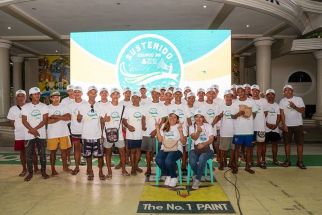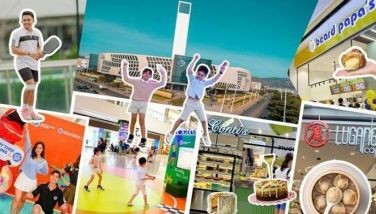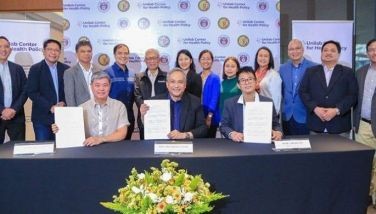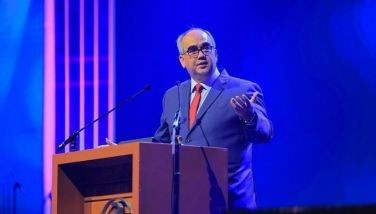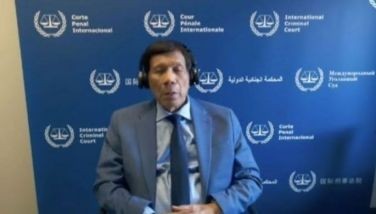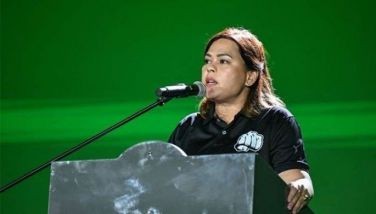Globalization

November 2, 2001 | 12:00am
HONOLULU —- Halloween is a fun time to be here. Waikiki is packed with people in costumes, although a resident told me the crowd is thinner than usual. Over the mainland, however, people are wondering if it's safe for children to go trick or treating on Allhallows' Eve.
Terrorism has permanently altered life in the United States, and it’s changing lifestyles across the globe as well. The theme of our four-week Jefferson Fellowship at the East-West Center here was globalization, but it inevitably turned into the globalization of terrorism. Even after East-West Center president Charles Morrison and coordinator Dennis Donahue formally closed the program last week, conversation among the fellows kept going back to the terrorist threat.
The Philippines is on the American terrorist map, thanks to the Abu Sayyaf. These terrorists (I promised an imam I would stop calling them Islamic terrorists) and Imelda Marcos were the two names from the Philippines that every American I met instantly recognized. Sorry, no one seemed to know the name of our new President, except for people whose business it is to know about that sort of thing. And who’s that actor who’s now in jail?
Unless our government does something decisive about the Abu Sayyaf threat, foreigners are going to stay away from our country. I told anyone who cared to listen that the terrorists operated in only a small area of the southern Philippines, far from Metro Manila and the major tourist destinations. But they seemed to remember that Palawan is a major tourist destination, far from the Abu Sayyaf base, and yet wasn’t there a raid earlier this year?
Maybe Tourism Secretary Dick Gordon is right, that all we need is better marketing. After all, violence has not stopped tourists from visiting Israel or the pyramids of Egypt. Bombs go off in London and other parts of Western Europe, yet the tourists keep coming.
This thought, however, should not lull us into complacency. There’s stiff competition out there for tourist revenues. Thailand, with its distinct culture well-preserved, beckons to those who want a taste of the tropics. Vietnam is scrambling to get a bigger chunk of the tourism pie in our corner of the world.
I always pitch our world-class beaches and diving areas to foreigners I meet. But if foreigners are worried about an Abu Sayyaf kidnapping, you can’t blame them for opting to visit Phuket or Tahiti instead. Or why not just subtropical Hawaii?
The other day I took a tour to the North Shore, capped by a diving show at Waimea Falls, then to Pearl Harbor and back to Honolulu. The scenery throughout was spectacular —- mountains, valleys, surf, lush vegetation. In Hawaii there’s no acrid smell of exhaust fumes. Tradewinds and intermittent light rain add to the refreshing climate. The air is so clean you can drive with the car roof down throughout the island without worrying about asthma or some allergic reaction. You don’t see garbage littering the streets. And there are clean public toilets everywhere. Except for one snorkeling area, all the beaches here are free and open 24 hours to the public.
Hawaii is a state of immigrants where Filipinos figure prominently. It produced the first Filipina (and first Asian) Miss USA. She narrates the documentary about immigrants and plantation life at the Waipahu Cultural Garden Park north of Honolulu. On my way there earlier this week the public bus was packed with Filipino high school students going home after morning classes, some of them speaking Tagalog.
Everywhere I go I meet Filipinos, mostly from the Ilocos Region and the Visayas. Hawaiian cuisine is a mishmash of Philippine, Polynesian, Chinese, Japanese, Portuguese and a smattering of European influences. Hawaiian cookbooks feature lumpia, pinakbet, pancit, tinola and sinigang (same names used, too). If you go to a Hawaiian restaurant you’ll find the menu offering everything from Japanese miso soup to lumpia and Chinese-style fried chicken.
Traveling gives you a more acute sense of globalization. In many shops here you can buy an American flag made in China from a Japanese sales clerk wearing an aloha shirt. There are socks made in Turkey and t-shirts with patriotic American messages made in Honduras. At Neiman Marcus some of the most exquisite Christmas tree decorations for sale are made in the Philippines.
In New York one of our Chinese fellows who’s working on his English took a look around the subway train —- at white, black, Asian, Latino, Indian and Arab faces – and told me, "We’re not strangers here. We can be Americans here."
There’s no stopping globalization, terrorist threat and all. We better be ready for the challenges it brings.
Terrorism has permanently altered life in the United States, and it’s changing lifestyles across the globe as well. The theme of our four-week Jefferson Fellowship at the East-West Center here was globalization, but it inevitably turned into the globalization of terrorism. Even after East-West Center president Charles Morrison and coordinator Dennis Donahue formally closed the program last week, conversation among the fellows kept going back to the terrorist threat.
The Philippines is on the American terrorist map, thanks to the Abu Sayyaf. These terrorists (I promised an imam I would stop calling them Islamic terrorists) and Imelda Marcos were the two names from the Philippines that every American I met instantly recognized. Sorry, no one seemed to know the name of our new President, except for people whose business it is to know about that sort of thing. And who’s that actor who’s now in jail?
Unless our government does something decisive about the Abu Sayyaf threat, foreigners are going to stay away from our country. I told anyone who cared to listen that the terrorists operated in only a small area of the southern Philippines, far from Metro Manila and the major tourist destinations. But they seemed to remember that Palawan is a major tourist destination, far from the Abu Sayyaf base, and yet wasn’t there a raid earlier this year?
Maybe Tourism Secretary Dick Gordon is right, that all we need is better marketing. After all, violence has not stopped tourists from visiting Israel or the pyramids of Egypt. Bombs go off in London and other parts of Western Europe, yet the tourists keep coming.
I always pitch our world-class beaches and diving areas to foreigners I meet. But if foreigners are worried about an Abu Sayyaf kidnapping, you can’t blame them for opting to visit Phuket or Tahiti instead. Or why not just subtropical Hawaii?
The other day I took a tour to the North Shore, capped by a diving show at Waimea Falls, then to Pearl Harbor and back to Honolulu. The scenery throughout was spectacular —- mountains, valleys, surf, lush vegetation. In Hawaii there’s no acrid smell of exhaust fumes. Tradewinds and intermittent light rain add to the refreshing climate. The air is so clean you can drive with the car roof down throughout the island without worrying about asthma or some allergic reaction. You don’t see garbage littering the streets. And there are clean public toilets everywhere. Except for one snorkeling area, all the beaches here are free and open 24 hours to the public.
Everywhere I go I meet Filipinos, mostly from the Ilocos Region and the Visayas. Hawaiian cuisine is a mishmash of Philippine, Polynesian, Chinese, Japanese, Portuguese and a smattering of European influences. Hawaiian cookbooks feature lumpia, pinakbet, pancit, tinola and sinigang (same names used, too). If you go to a Hawaiian restaurant you’ll find the menu offering everything from Japanese miso soup to lumpia and Chinese-style fried chicken.
Traveling gives you a more acute sense of globalization. In many shops here you can buy an American flag made in China from a Japanese sales clerk wearing an aloha shirt. There are socks made in Turkey and t-shirts with patriotic American messages made in Honduras. At Neiman Marcus some of the most exquisite Christmas tree decorations for sale are made in the Philippines.
In New York one of our Chinese fellows who’s working on his English took a look around the subway train —- at white, black, Asian, Latino, Indian and Arab faces – and told me, "We’re not strangers here. We can be Americans here."
There’s no stopping globalization, terrorist threat and all. We better be ready for the challenges it brings.
BrandSpace Articles
<
>
- Latest
- Trending
Trending
Latest
Trending
Latest

By IMMIGRATION CORNER | By Michael J. Gurfinkel | 1 day ago

By POINT OF VIEW | By Josue Raphael J. Cortez | 1 day ago
Recommended







